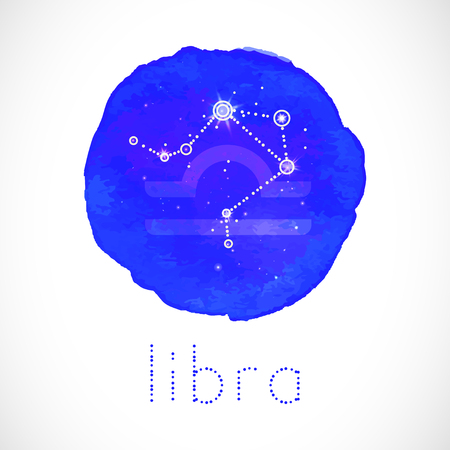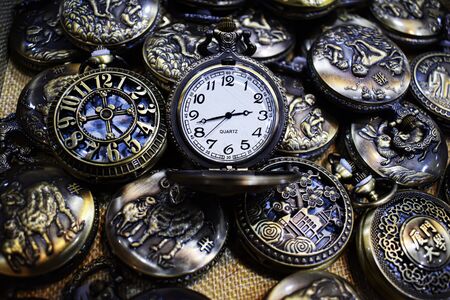Introduction to Pre-Roman Druidic Culture
Before the Roman conquest of Britain, the land was home to a rich and complex tapestry of tribal societies. At the heart of these communities were the Druids, a distinct social class revered for their wisdom, spiritual authority, and deep connection to the natural world. The Druids acted not only as priests but also as teachers, judges, and advisors, shaping the moral and intellectual fabric of ancient British society. They served as custodians of oral tradition, passing down knowledge through generations without reliance on written texts, which allowed their beliefs and practices to remain both flexible and resilient in the face of external pressures. At their core, pre-Roman Druidic culture placed immense value on harmony with nature, cyclical patterns observed in the environment, and a profound respect for the interconnectedness of all life. Their worldview emphasised a balance between earthly existence and the spiritual realm, underpinned by an intricate understanding of astronomy and seasonal changes. These foundational beliefs provided the context for their astrological traditions, which not only guided agricultural practices and ritual observances but also shaped personal identities and community cohesion long before the arrival of Roman influence.
2. Foundations of Druidic Astrological Thought
The cosmological perspectives of the ancient Druids were deeply intertwined with their keen observations of the natural world and celestial cycles. Unlike later Roman-influenced systems, pre-Roman Druidic astrology was closely attuned to the landscape and seasonal rhythms characteristic of Britain and Ireland. The Druids understood the sky as a living tapestry, where the movement of the sun, moon, and stars offered guidance for both communal rituals and individual paths in life.
Observations of Nature and Celestial Events
Druidic wisdom stemmed from direct engagement with nature. Their sacred groves served not only as places of worship but also as observatories where they tracked solstices, equinoxes, lunar phases, and planetary alignments. These events were not merely astronomical phenomena; they held profound symbolic meanings, shaping the spiritual calendar and agricultural activities.
Key Celestial Events in Druidic Tradition
| Event | Approximate Date | Symbolic Meaning |
|---|---|---|
| Winter Solstice (Alban Arthan) | 21st December | Rebirth, renewal, return of the light |
| Spring Equinox (Alban Eilir) | 20th-21st March | Balance, new beginnings, fertility |
| Summer Solstice (Alban Hefin) | 21st June | Culmination of energy, abundance, illumination |
| Autumn Equinox (Alban Elfed) | 22nd-23rd September | Harvest, gratitude, preparation for rest |
Symbolism and Practical Influence
The Druids attributed sacred significance to these solar events. For instance, the Winter Solstice marked a turning point—celebrating the rebirth of the sun and offering hope during the darkest days. This cyclical awareness encouraged communities to align their agricultural practices, festivals, and personal reflections with cosmic rhythms. In everyday life, such alignment provided reassurance and structure—a reminder that nature’s cycles could guide human decisions and foster resilience through change.

3. Key Practices in Druidic Astrology
Druidic astrology, as practised before the Roman influence in Britain, was deeply woven into the rhythms of the natural world and the turning of the seasons. The Druids observed the sky and earthly cycles to inform not just their spiritual beliefs, but also their everyday lives and community events. Central to these practices were rituals, festivals, and ceremonies that marked significant points within the agricultural and solar calendar, each rich with astrological symbolism and intent.
Samhain: Honouring Ancestors at Summer’s End
Samhain, one of the most prominent Druidic festivals, took place at the end of October and heralded both the Celtic new year and the onset of winter. Astrologically, this festival aligned with a time when the boundaries between worlds were considered thin, allowing for communication with ancestors and spirits. Rituals during Samhain included lighting bonfires, performing divinations about the coming year, and leaving offerings for departed loved ones—practices believed to be guided by celestial signs and lunar phases.
Beltane: Celebrating Fertility and Renewal
Beltane, celebrated in early May, marked the return of warmth and fertility to the land. Druids observed Beltane as a fire festival under auspicious planetary alignments that signalled renewal and growth. Communities would kindle great fires on hilltops—believed to purify, protect, and ensure prosperity for livestock and crops. Astrological wisdom dictated the timing of these rites; certain stars or moon phases were thought to enhance Beltane’s blessings.
Observing Solstices and Equinoxes
Druidic ceremonies also revolved around the solstices and equinoxes—the sun’s passage through key points in its cycle. Midsummer (the Summer Solstice) was especially significant, as Druids gathered at sacred sites like Stonehenge to watch sunrise alignments. These gatherings reinforced communal bonds while celebrating solar vitality. Likewise, the Winter Solstice honoured rebirth and hope during the darkest days, with rituals often guided by star patterns visible on the long nights.
Astrology’s Guiding Role in Ritual Practice
These key festivals—and many lesser-known rites—were not random acts but carefully timed according to celestial observations passed down by Druidic scholars. By reading omens in planetary movements or interpreting lunar cycles, Druids sought harmony with nature’s order. Today, echoes of these traditions endure in British seasonal celebrations, reminding us how pre-Roman Druidic astrological wisdom shaped both spiritual practice and communal life through an attunement to Earth’s timeless cycles.
4. Druidic Sites and Celestial Alignment
The landscape of pre-Roman Britain is dotted with enigmatic monuments, many of which are strongly associated with the Druidic tradition and their astrological practices. Among these, Stonehenge and Avebury stand out as iconic sites, captivating scholars and visitors alike with their monumental scale and mysterious origins. It is widely believed that these ancient structures were not randomly placed but rather carefully constructed to align with significant celestial events, reflecting a sophisticated understanding of astronomy by the Druids.
Stonehenge: A Monument Aligned With the Heavens
Stonehenge is perhaps the most recognised prehistoric monument in Britain, celebrated for its precise alignment with the solstices. The Heel Stone, in particular, marks the spot where the sun rises on the summer solstice, an event still celebrated today. This alignment suggests that Stonehenge functioned as more than just a ceremonial site; it was likely a vital observatory for tracking solar and lunar cycles. The careful arrangement of its stones allowed the Druids to anticipate seasonal changes—knowledge essential for agricultural planning and ritual activity.
Avebury: A Broader Ritual Landscape
Avebury, another remarkable site, features one of the largest stone circles in Europe and forms part of a wider sacred landscape including avenues, barrows, and mounds. Like Stonehenge, Avebury’s layout is thought to correspond with celestial phenomena such as lunar standstills and equinoxes. The interconnectedness of these sites hints at a broader network of ritual landscapes used by Druids to observe celestial patterns and to conduct ceremonies marking key moments in the astrological calendar.
Celestial Alignments at Key Druidic Sites
| Site | Main Celestial Event | Pertinent Features |
|---|---|---|
| Stonehenge | Summer Solstice Sunrise Winter Solstice Sunset |
Heel Stone alignment Inner horseshoe orientation |
| Avebury | Lunar Standstill Equinox Sunrises/Sunsets |
Circular avenue layout Barrow positioning |
| Silsbury Hill | Solar and Lunar Cycles | Artificial mound for observation Panoramic views of horizon events |
The Lasting Influence on British Culture
The enduring fascination with these sites reflects their importance not only in ancient times but also in shaping British cultural identity. Modern Druidic groups continue to gather at Stonehenge and Avebury during solstices, celebrating traditions rooted in pre-Roman practices. This ongoing connection between land, sky, and ritual highlights how ancient celestial alignments continue to inspire contemporary spiritual exploration across Britain.
5. Surviving Influence on British Folk Traditions
The enduring legacy of pre-Roman Druidic astrological traditions can still be traced within the rich tapestry of British folk customs, rural rituals, and seasonal celebrations. While centuries of change have layered new meanings and practices onto these ancient roots, a careful analysis reveals how Druidic cosmology has subtly shaped local culture. Many folk festivals—such as Beltane and Samhain—bear clear echoes of the Druidic reverence for celestial cycles, with bonfires, processions, and symbolic acts aligning with lunar or solar events. Village Maypole dances, for example, draw upon the Druidic honouring of fertility and the turning year, while solstice gatherings at places like Stonehenge reflect the ongoing fascination with cosmic alignments.
In rural areas across Britain, agricultural customs often mirror ancient astrological calendars. The timing of planting or harvest rituals frequently coincides with dates significant in Druidic tradition, suggesting that knowledge of the stars once guided not only spiritual but also practical aspects of community life. Local lore—such as weather predictions tied to moon phases or animal behaviours—is imbued with a worldview that recognises harmony between terrestrial activity and celestial rhythms.
Moreover, many British folk tales feature motifs that resonate with Druidic astrology: enchanted animals appearing at liminal times, mysterious lights on sacred hills during equinoxes, or wise elders interpreting omens in the stars. These stories reinforce the idea that human fate is intertwined with wider cosmic forces—a distinctly Druidic perspective subtly woven into collective memory.
Ultimately, while Christianity and later cultural shifts have transformed public expressions of belief, the underlying patterns established by Druidic astrologers persist. They manifest in communal gatherings timed to natural cycles, in oral traditions passed down through generations, and in an enduring sense of wonder towards the sky above. Recognising these echoes not only honours Britain’s ancient past but also enriches our understanding of its diverse present-day identity.
6. Contemporary Reflections and Revival
In recent decades, there has been a marked resurgence of interest in Druidry and ancient astrological practices across the UK. This revival is not merely an exercise in nostalgia but reflects a genuine search for cultural roots, ecological awareness, and spiritual meaning within a distinctly British context. Modern Druidic groups, such as The Order of Bards, Ovates and Druids (OBOD), have grown significantly, drawing members from diverse backgrounds who are united by their fascination with pre-Roman traditions and their desire to reconnect with the land.
Neo-Pagan Movements and Cultural Renaissance
The broader neo-pagan movement has played a pivotal role in bringing Druidic astrology back into public consciousness. Contemporary practitioners often blend historical research with imaginative reconstruction, creating rituals and festivals that echo ancient seasonal celebrations. These efforts, though sometimes met with scepticism from mainstream society, contribute to a vibrant subculture that values inclusivity, environmental stewardship, and respect for ancestral wisdom.
Local Perspectives and Community Engagement
Across the UK, local perspectives on this revival vary. In some rural areas—particularly near sites like Stonehenge and Avebury—there is strong community involvement in solstice gatherings and lunar observances. Urban centres also witness Druidic-inspired events, often linked to wider discussions about sustainability and heritage. For many Britons, these practices offer a sense of continuity with the landscape and an alternative framework for understanding time, fate, and personal growth.
Challenges and Future Directions
While contemporary interest in Druidic astrology is robust, it faces challenges such as historical gaps, commercialisation, and questions of authenticity. Nonetheless, the ongoing dialogue between scholars, practitioners, and the broader public ensures that these traditions remain dynamic rather than static relics of the past. As Britain continues to negotiate its identity in a rapidly changing world, the enduring appeal of pre-Roman Druidic cosmology suggests that ancient wisdom still holds relevance for those seeking connection—both to their heritage and to each other.


